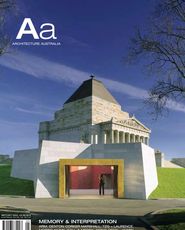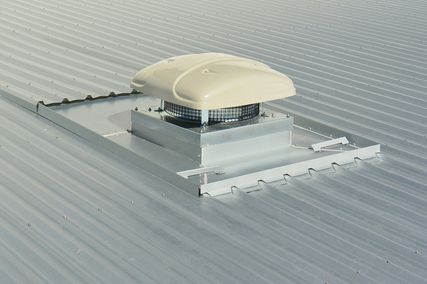This is a sensitive and soulful building that fully evokes the spirit of Uluru. The building knits together four disparate parts – a subtle and informative display, an art gallery, shop and nonpublic areas - with the landscape. The materials contribute to a spontaneous feeling that this building is part of the land. Through an animated relationship with its powerful site, extensive use of sustainable materials, low energy consumption and sympathetic responsiveness to both people and the environment, the building celebrates the spirit of the Anangu culture.
JURY COMMENTS, RAIA AWARD FOR THE ULURU-KATA TJUTA CULTURAL CENTRE. ARCHITECTURE AUSTRALIA (NOV/DEC 1996)
The Visitor Centre colludes in its landscape with architectural counterpoint… it exudes that kind of spontaneity which can only be achieved by a prior deep sensitivity of thought and feeling.
JURY COMMENTS, RAIA AWARD FOR THE KAKADU VISITOR CENTRE ARCHITECTURE AUSTRALIA (NOV/DEC 1994)
From a vast, barren and windswept slag heap, the designers have wrought a powerful new place, ripe with meaning and a pervasive sense of genius loci. An extraordinary, metaphysical relationship between it and the town/people seems tangibly in the air. It has established a relationship with the town akin to Sydney with its Opera House.
JURY COMMENTS, RAIA AWARD FOR THE LINE OF LODE VISITOR CENTRE ARCHITECTURE AUSTRALIA (NOV/DEC 2001)
The history of travel is a continuing quest for the authentic, with destinations discarded once their own popularity erodes their authenticity: the paradox of the original “there” of the destination no longer being available, to paraphrase Ada Louise Huxtable. Yet tourism can also be an empowering force, providing an economic stimulus to communities that might otherwise be in decline, it can also enhance a sense of pride, providing external validation, of the special qualities enjoyed by the local community and, promote an appreciation of local cultures and environments. This is the context for the contemporary visitor centre.
The modern visitor centre is a relatively late twentieth-century phenomenon, which has evolved rapidly with Australia’s recognition of the significance of tourism to the economy and the impetus of government funding through programmes such as the Bicentennial and Centenary of Federation Grants. This new building type has provided many opportunities for architects – including younger practices – to be involved with small, often architecturally ambitious, public buildings. But the type is a complex one, and brings with it responsibilities as well as opportunities for the architect. When designing these small buildings, the architect must negotiate the tensions between the successes and problems of tourism, the question of how to interpret local history, culture and memory, and the problems that attend signature buildings.
The visitors centre’s antecedents are, in my view, the humble local tourism information office and local history museum. The new visitor centre has assumed the functions of these two formerly distinct facilities, combining and extending them in new ways. The Tourism Information Office had a simple mandate of promoting visitor expenditure in its locality. Indeed “Tourism Information Office” is perhaps too grand a term for the collection of brochures, often housed in a corner of another business, promoting local accommodation and, in the past, attractions such as Australia’s fascination with large objects – the Giant Lobster and the Big Banana being particularly memorable examples. The lineage of the local history museum is different, focusing on the preservation of artefacts from the local region and the recording of social history.
The National Trust has been responsible for many of these museums, which range from a collection of artefacts to more ambitious interpretive displays.
The contemporary visitor centre typically combines the distribution of tourist information with the interpretation of particular regions. This interpretation of cultural history and memory links the visitor centre to the local history museum. But, where local history museums often struggle with expanding collections, limited resources and low visitation levels, visitor centres have been able to attract substantial government funding, at least in their implementation stage. The media of interpretation also differs dramatically, with visitors centres often using multimedia technology to enliven cultural history (sometimes at the expense of an appreciation of the artefact). However, they can also suffer from static displays which, having been viewed once, discourage repeat visits.
This interpretative role gives cultural legitimacy to visitor centres and they have become a major focus for visitation in the way that stately homes and cathedrals were an essential part of the “grand tour” of previous centuries and art museums have been since Victorian times – now, for example, a trip to Uluru would be incomplete without visiting Greg Burgess’s Uluru-Kata Tjuta Cultural Centre.
The “must-see” status of these buildings is often pursued through dramatic form.
Briefs for visitor centres often demand an “icon”, envisaging that the building will, itself, become a marketable destination. But this can also be the project’s undoing. Buildings that attempt to become “destinations in their own right” run the risk of contravening their raison d’etre, providing a packaged experience which, through its very completeness, discourages rather than encourages visitors to explore the region. This can be reinforced by the interpretative display designer’s desire for an idealized black box – where a virtual world is created at the expense of a sense of connection with the local environment.
The iconic nature of these projects may partly explain their frequent presence, from the early 1990s onwards, in the RAIA National Awards programme. However, the awardwinning projects all also demonstrate strong connections to place and promote an appreciation of the environment in which they are located.
Burgess’s Uluru-Kata Tjuta Cultural Centre, recipient of a 1996 High Commendation for Public Buildings, realizes the ambition of many designers to connect their buildings with the locale by embodying a “spirit of place”. The centre engages visitors with Anagu culture, sowing the seeds for further education and understanding between Indigenous and non indigenous people. It also promotes an appreciation of the spinifex and desert oak landscape that surrounds Uluru. While the building is the container for interpretive material, through its form and layout it also becomes part of the interpretive experience.
The Kakadu Visitor Centre, by Glenn Murcutt and Troppo Architects, received the Sir Zelman Cowan Award in 1993. Like the Uluru-Kata Tjuta Cultural Centre, this building embraces its landscape setting and eschews the dangers of the iconic building – as Neville Quarry wrote in the jury comments, the building is “refreshingly free of any selfmocking symbolism”.
A more recent National Award winner is the Line of Lode Miners Memorial and Visitor Centre, which received the Walter Burley Griffin Award for Urban Design in 2000.
My first impressions of Broken Hill in the 1980s were of the enormous slag heap which dominates the town centre, seemingly poised to engulf the town. Revisiting Broken Hill in 2001 and arriving at night, the floodlit Memorial and Visitor Centre located on top of the slag heap provided twin beacons guiding us to the centre of town and transforming the night time skyline. By day, this complex provides a vantage point to appreciate both the town and the extraordinary landscape in which it sits. These buildings have a transformative quality, taking what may have been viewed as industrial blight and transforming the slag heap into a major urban design asset which enhances the perception of Broken Hill for both locals and visitors.
Visitor centres can contribute to the transformation of destinations in both positive and negative ways. On the one hand they can help with the economic and cultural revival of regions – as at Broken Hill. On the other, they can be involved in changing towns from service centres for the local community to centres when the cultural traditions are suppressed under the weight of tourism facilities.
It is the architect’s responsibility in promoting tourism through the construction of visitor centres, to mediate between the potentially destructive values of tourism, the pitfalls of self-consciously ‘iconic architecture’ and the potential contribution they can make to the cultural, social and economic life of communities.
My own experience in the creation of visitor centres suggests that where there is strong community involvement, both in the design phase and the ongoing management and usage of the facility, the facility has the greatest chance of providing a genuine experience for visitors, while ensuring long term economic survival and avoiding becoming a drain rather than an asset to their community. The involvement of local communities during the design phase provides access to a wealth of local knowledge stories and ideas which can imbue the design with a sense of place.
Creating other functions at the visitor centre can also assist them in becoming a focus for the local community.
Our practice’s first foray into visitor centre design was at Port Pirie in 1992, an industrial town with a declining economy and a history of severe environmental health issues. The brief was developed to integrate tourism information, a regional art gallery, bus terminal and community meeting space – an electric mix which has helped to create a lively centre. The regional gallery runs a continuous program of national touring and local exhibitions, ensuring local visitation and promoting repeat visitation by tourists.
The redevelopment of the former Port Pirie Railway Station as a visitor centre was a collaborative experiment for our young practice, with extensive community involvement and design participation of a number of visual artists. The locals generously shared their history, their aspirations for Port Pirie’s future, and their skills and knowledge of local materials – all of which informed the design and construction process.Working with artists, we attempted to weave some of Port Pirie’s unique attributes into the design, such as the impetus for its development last century at the junction of three railway gauges.We also incorporated the town’s wealth of industrial products, lead, zinc and copper, together with mountains of railway scrap to create a building which we hoped would intrigue visitors and create a sense of pride in the town’s achievements.
We believe that by creating a building that locals want to visit, the visitor centre contributes to the ongoing cultural life of a town and becomes a desirable destination for visitors who will not simply travel from visitor centre to visitor centre experiencing places vicariously but will feel that they have been a part of what it is to be local.
Source

Archive
Published online: 1 Sep 2003
Words:
Susan Phillips
Issue
Architecture Australia, September 2003














